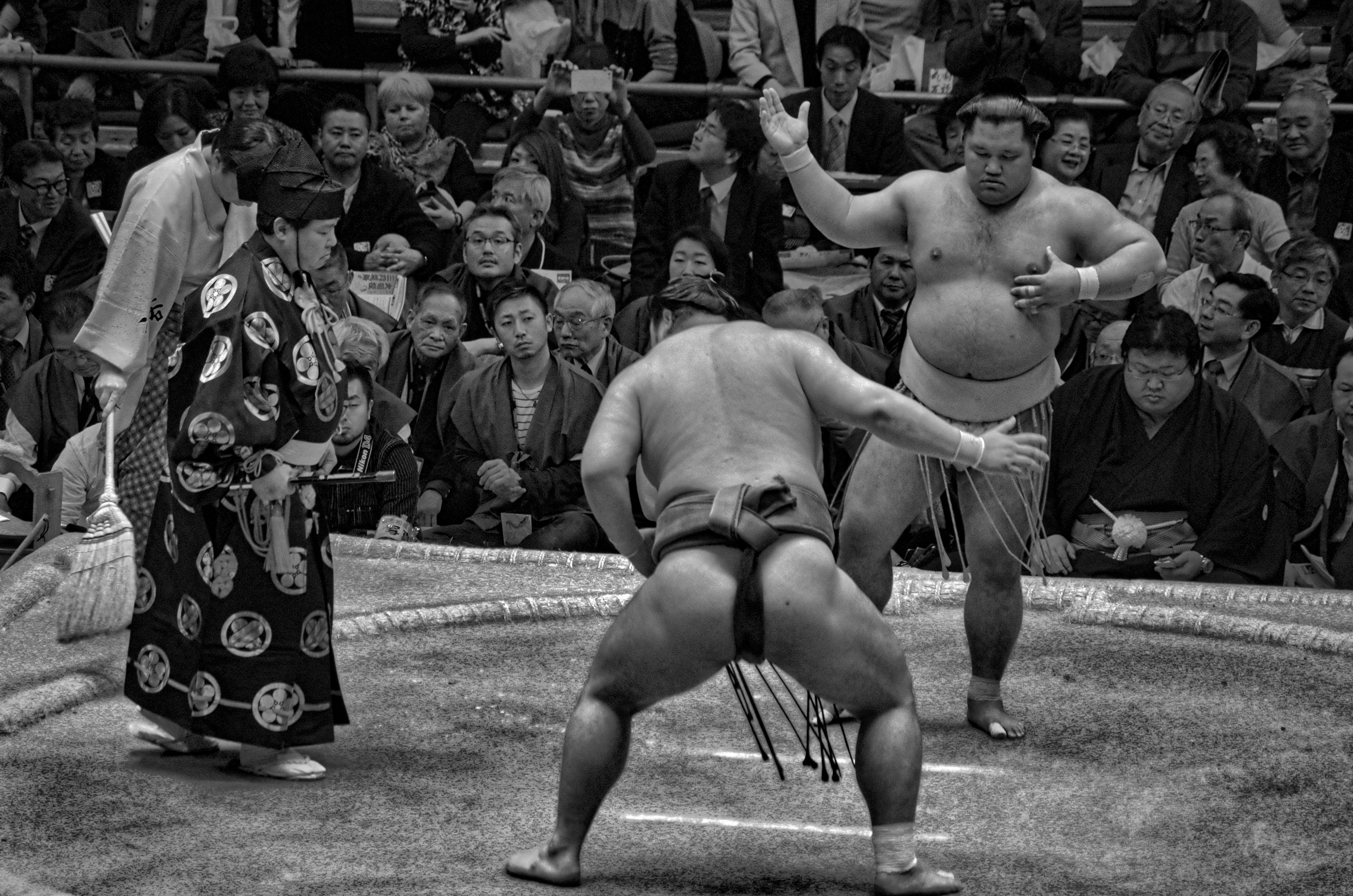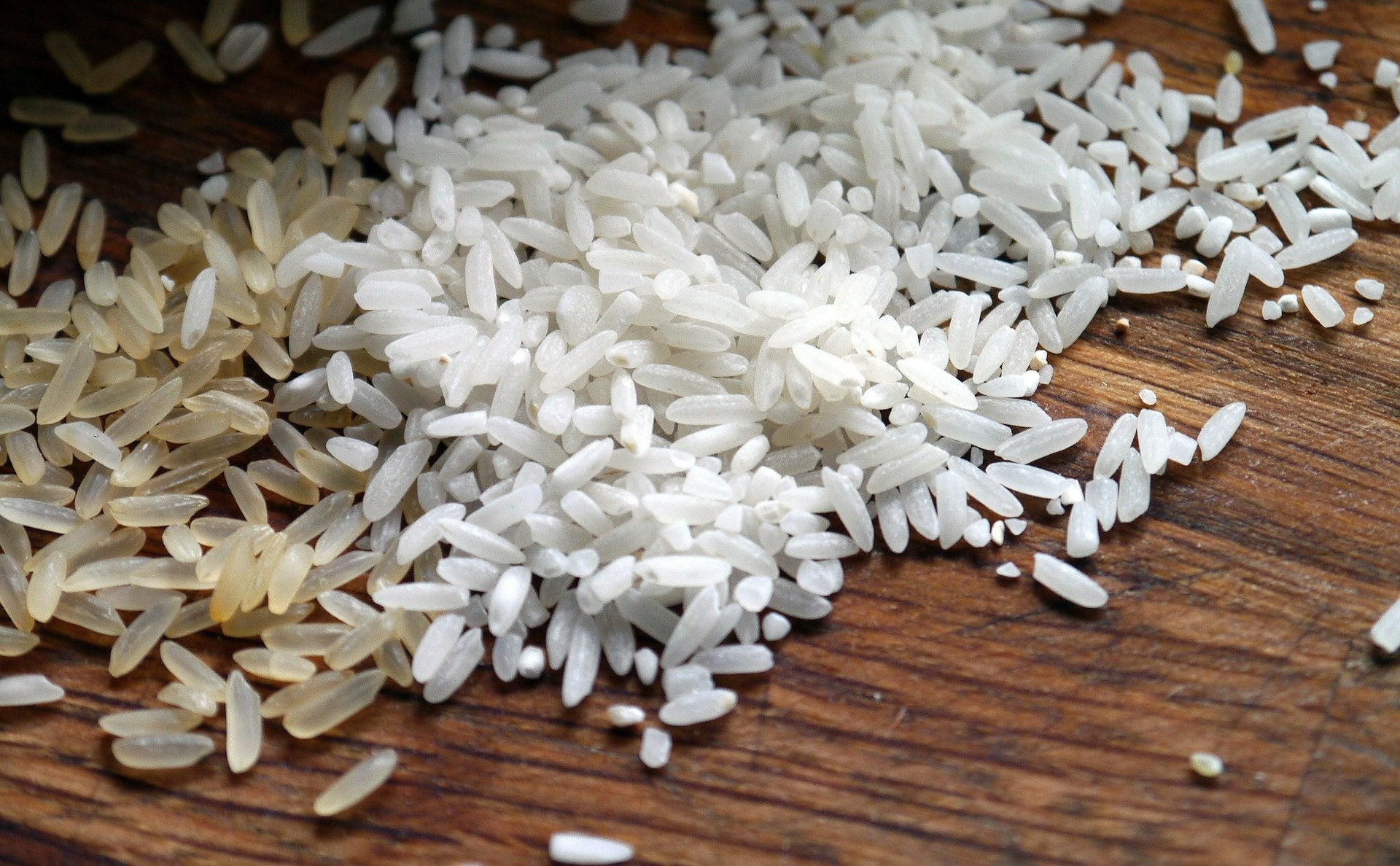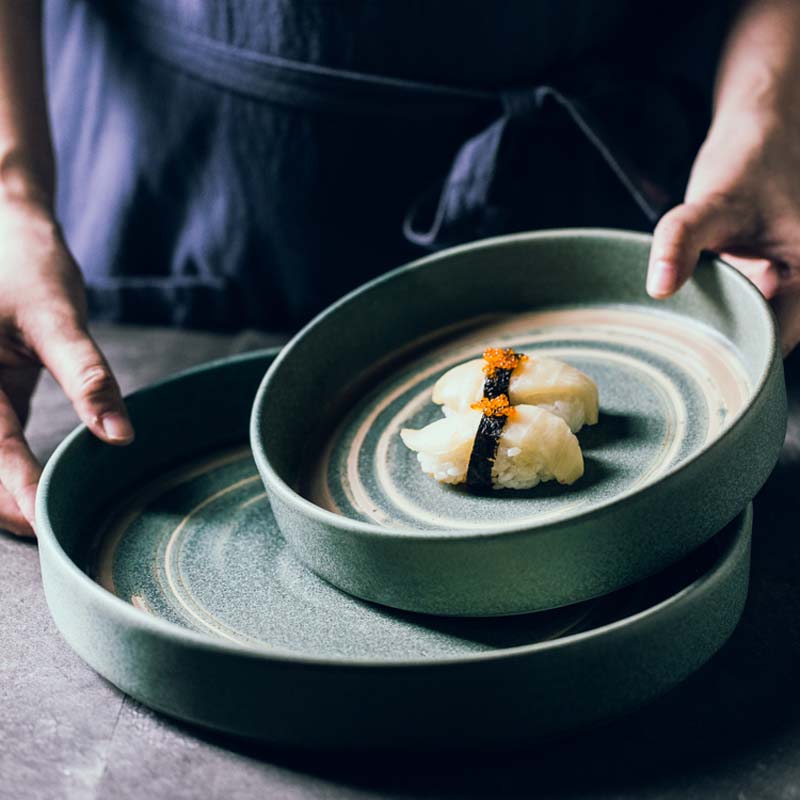
Sumo, a national sport in Japan
At first glance, sumo may seem like a rather strange sport. Obese men wearing thongs push each other into a small ring, where the opening ceremony is usually longer than the bout itself. However, dig a little deeper and you'll discover a unique and technical sport with a rich history and wrestlers whose rigor and dedication can only impress.
Sumo is said to have its origins in a Shinto ritual dance where the most powerful men displayed their strength before the kami (gods or spirits) as a sign of respect and gratitude for a good harvest. Later, sumo was used to compare strength and determine the most skilled fighters in unarmed combat. It wasn't until the Edo period that professional sumo wrestlers emerged from the ranks of amateurs and regular competitions began to be held. The best fighters began to achieve celebrity status, and sumo's popularity quickly spread among the masses. This was the true beginning of the sport as we know it today.
Sumo wrestlers are called rikishi in Japanese. There are approximately 650 rikishi in sumo's six divisions:
- maku-uchi
- jury
- makushita
- sandame
- jonidan
- jonokuchi
The maku-uchi (the top 42 rikishi) naturally receive the most media attention. At the top of this pile is the yokozuna , the grand champion. This position is usually achieved by winning two honbasho (major tournaments that determine ranking) in a row. There are six honbasho per year, one for each odd month of the year, and they last 15 days. To date, there have been only 73 yokozuna in the history of the sport, which gives some idea of how difficult it is to achieve this rank.
Discover our new Fall 2021 Collection and make your home a place of happiness and conviviality!
Sumo is unique in that the pre-match ceremony can be just as fascinating as the bout itself. The day before each major tournament, the dohyō (the 4.55-meter-diameter clay platform that houses the ring in which the bout takes place) is "cleaned" to pray for the safety of the rikishi. To do this, salt, cleaned rice, dried chestnuts, dried kelp, dried cuttlefish, and nutmeg berries are placed in a small hole in the center of the ring as offerings to the gods.

The rikishi mount the dohyō from the east and west, with the rikishi from the east side entering first. They enter the ring and perform a ritual called shiko (the lifting and trampling of the legs ), which is probably the act most commonly associated with the sport outside of Japan. This is not a mere warm-up: the clapping serves to attract the attention of the gods, the arms are raised to the sky to show that they are not carrying weapons , and the famous legs are raised and trampled to crush any evil spirits .
Once the shiko is completed, the rikishi leave the circle and purify themselves. The first ritual is called chikara-mizu (literally "water of strength"), with each rikishi receiving this water from the opponent they last defeated. As with the purification process at shrines and temples, each rikishi takes a handful of water and brings it to their mouth. Then, they take a handful of kiyome-no-shio (purifying salt) and throw it over the ring before entering.
Once the referee ( gyōji ) gives the signal for the bout to begin, each rikishi crouches behind a white line called a shikirisen on their half of the ring. The bout begins when both rikishi have clenched fists resting on or behind their shikirisen.
Since the rikishi ultimately decide when the fight begins, the moments leading up to it can be incredibly tense. Rikishi often crouch for a few seconds, cautiously waiting to see what their opponent does, before getting up to regroup. They can leave the ring to their respective corners, but if they do, they must clean the ring again with salt before re-entering. A single bout decides the winner (this is not a best-of system), and since the first few seconds of rikishi sparring often decide the winner, you can begin to understand why the pre-fight deliberations are often the most intense moments of the fight.
Looking for a refresh or a new home? Transform your living room into a modern and authentic space with our carefully selected decorative items !
Officially, there are 82 techniques called kimari-te ("decisive hand") by which a rikishi can win the bout (e.g., push-out, neck throw, etc.). Once a winner emerges, the two rikishi stand on either side of the ring and bow to each other (neither should show emotion here), before the defeated rikishi leaves the ring and the gyōji officially declares the winner.
The rules
The basic rule is simple: if any part of your body other than your feet touches the ground or if you step out of the straw ring , the fight is over and your opponent is declared the winner. During the fight, the following acts are prohibited :
- Pulling hair
- Digging out one's eyes
- Hitting with closed fists (slapping is permitted)
- Choking (but pushing open palms onto the opponent's throat is permitted).
- Grab the crotch of the opponent's mawashi.
There are no weight classes . It's not just a matter of size: agility can be just as important, and smaller rikishi have the advantage of being able to move out of the way and slip behind their larger opponent and use their considerable momentum against them.
Although historically a Japanese-dominated sport, foreigners have recently become a common sight on the sumo circuit in Japan. In fact, the rikishi with the most tournament wins is a Mongolian wrestler named Hakuho Sho . Foreigners (a good number of whom are Mongolian) make up about 5% of the total number of rikishi on the circuit today.


